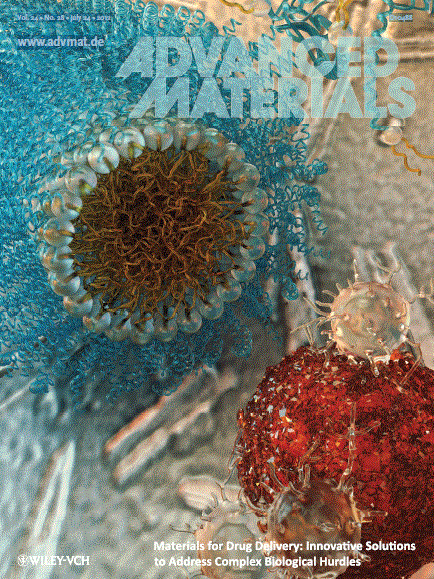 The debilitating side effects traditionally experienced by patients being treated with chemotherapy are an example of how potent pharmaceuticals, found to be efficacious in the laboratory, have toxic effects and can damage the body’s immune system when administered to patients. Side effects of this kind of treatment are sometimes so severe that they dramatically reduce patience compliance even where no alternative treatment is available. In order to maximise the therapeutic effect of drugs, whilst simultaneously minimising the side effects that patients experience, the development of delivery systems that can transport biomolecules to specific places within the body and thereby convey potent drugs directly to the site of disease is essential.
The debilitating side effects traditionally experienced by patients being treated with chemotherapy are an example of how potent pharmaceuticals, found to be efficacious in the laboratory, have toxic effects and can damage the body’s immune system when administered to patients. Side effects of this kind of treatment are sometimes so severe that they dramatically reduce patience compliance even where no alternative treatment is available. In order to maximise the therapeutic effect of drugs, whilst simultaneously minimising the side effects that patients experience, the development of delivery systems that can transport biomolecules to specific places within the body and thereby convey potent drugs directly to the site of disease is essential.
A Special Issue of Advanced Materials that is dedicated to providing an overview of the challenges related to targeted therapeutic delivery and innovations in the development of nanocarriers designed to meet these challenges has been published this week. Guest edited by leading experts in the field, Samir Mitragotri of the University of California, Santa Barbara and Joerg Lahann of the University of Michigan, with contributions from some of the top research groups working on the design and fabrication of novel drug carrier systems, the issue demonstrates the potential of materials science to address as yet unmet needs in drug delivery. The issue addresses the design of nanocarrier materials for the encapsulation and release of pharmaceutical agents, how the carriers can overcome biological barriers, enter the specific cell tissues and reach their targets, and the accumulation of the drug at the site of action.

















